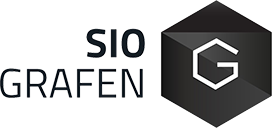Laserassisterad tillverkning av grafenbaserade antibakteriella ytor
Syfte och mål
Vårdrelaterade infektioner (VRI) är ett globalt problem som orsakar mycket lidande, stora kostnader för sjukvården och en ökad risk för antibiotikaresistensutveckling. Majoriteten av VRI kan kopplas till användning av invasiva medicintekniska produkter som koloniseras av bakterier, ett problem som skulle kunna minskas om produkten får en antibakteriell yta. I denna förstudie var målet att utvärdera potentialen för att använda laser till att kunna producera antibakteriella ytor baserat på grafen och det målet har uppfyllts med lovande resultat.
Resultat och förväntade effekter
Tidigare projekt har demonstrerat att en yta med upprättstående grafenflingor förhindrar bakteriekolonisation mycket effektivt. Detta beror på att grafenflingorna försvårar för bakterier att binda till ytan och de kan också punktera bakterier som försöker. Grafenytan har potential att fungera mot de flesta bakterietyper, inklusive antibiotikaresistenta stammar och utan att inducera resistensutveckling eftersom den bara förhindrar kolonisering. Kommersialisering av ytan är dock beroende av en skalbar tillverkningsprocess och en sådan har utvärderats i detta projekt.
Upplägg och genomförande
Planen var att producera prover med antibakteriella ytor av grafen i en skalbar process med hjälp av laser (WP1). För att förfina processen och säkerställa att den resulterar i ytor med potential att förhindra bakteriekolonisation så granskades ytorna först med elektronmikroskopi. Ytor med lovande strukturer utvärderades för hur effektivt de förhindrar bakterietillväxt, men också vilka övriga egenskaper de har (WP2). Då förstudieresultaten är lovande så har det också parallellt pågått förberedelser och planering för att driva projektet vidare till nästa fas (WP3).

